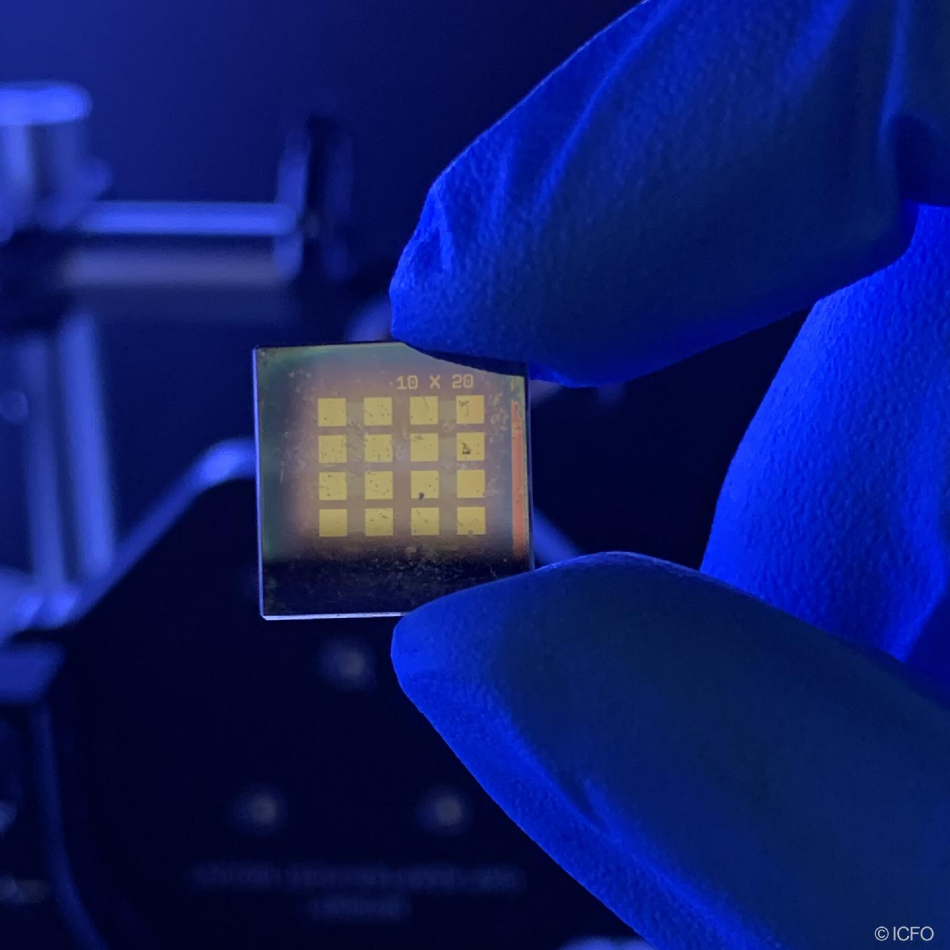Jan 17 2020
Optical sensing in the mid to long infrared (5 microns, or 5 μm) range has gained considerable significance in various fields as it is a useful tool for gas sensing, environmental monitoring, food quality control, thermal imaging, in the pharmaceutical industry, etc.
 Photo of the device: quantum dots coated on a transparent substrate with gold contacts for mid-infrared detection. Image Credit: ©ICFO.
Photo of the device: quantum dots coated on a transparent substrate with gold contacts for mid-infrared detection. Image Credit: ©ICFO.
This extremely rich spectral window includes large amounts of hidden information, which paves the way for new opportunities for multi or even hyperspectral imaging. Despite that there exist technologies with the potential to overcome these challenges, they are quite costly and very complex.
Although there is a high demand in the market to bring such functionalities to the consumer level, this would necessitate an inexpensive, CMOS-compatible technology that does not pose serious regulatory concerns.
PbS colloidal quantum dots (CQDs), which are compatible with CMOS technology, have materialized as a high-performance and cost-competitive photodetector technology. Recently, they have been shown to be successful in the short-wave infrared range (1–2 μm).
But, until now, there has been a primary limit: quantum dots such as those have depended on interband light absorption (photons excite carrier over the material’s bandgap). Consequently, this technology can work in a lower energy limit—the bandgap of the material.
In a research work reported recently in Nanoletters, led by Gerasimos Konstantatos, ICREA Professor at ICFO, ICFO scientists Iñigo Ramiro, Onur Ozdemir, Sotirios Christodoulou, Shuchi Gupta, Mariona Dalmases, and Iacopo Torre have described the creation of a colloidal quantum dot photodetector that can detect light in the long-infrared range (5–10 μm), using the first-ever mercury-free PbS CQDs.
As part of the experiment, the scientists employed a method to electronically dope the quantum dots permanently and powerfully. Thanks to the heavy doping method, they were able to enable a new regime for electron transitions: rather than depending on transitions over the material’s bandgap, they discovered a means to enable transitions among higher excited states, called intersubband (or intraband) transitions.
By realizing this, they could excite electrons through the absorption of photons that had photon energies considerably lower than earlier in the mid- and long-wave infrared. In addition, they showed that it is possible to adjust the spectral coverage of such detectors by varying the size of the dots, that is, the larger the quantum dots, the farther the absorption in the infrared.
The study outcomes have led to an exclusive and innovative material platform, which is based on heavily doped PbS CQDs that cover a wide range of light. In addition, the platform can also handle and overcome the difficulties currently faced by the field of photodetector technologies.
In combination with an inexpensive and evolving CQD technology, this newfound property of light absorption in the long infrared may revolutionize photodetectors that are compatible with extreme broadband and multispectral CMOS.